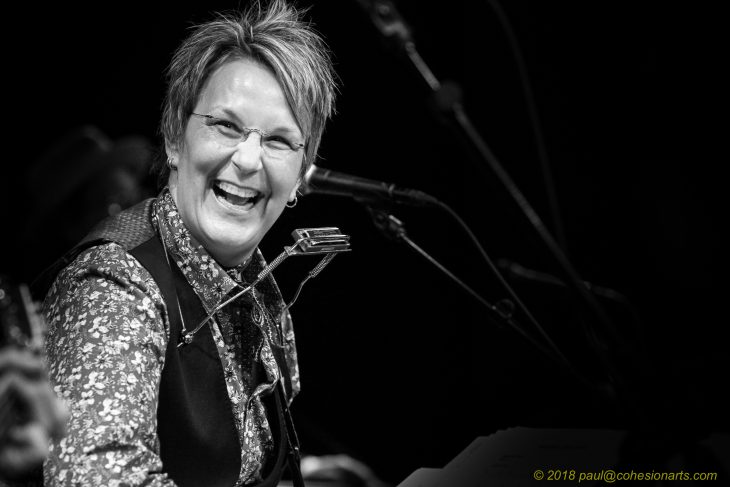Remember when I was writing about “Music 3.0“?
Of course you don’t, that was almost 10 years ago, before I folded “celestialjukebox.org” into one of the archived elements of this CohesionArts website.
My idea of “Music 3.0” (there are others, but they’re not nearly as prescient or comprehensive… 😜) was the culmination of what I still occasional refer to as my “Grand Nebulous Theory of The Future of Music” – a concept both “grand” and “nebulous” because, while I think the historical trajectory offers some useful clues, I don’t really have a solid grasp of the ultimate destination.
Whatever the ultimate destination, I think I walked into a fresh landmark along the route this past Saturday when I spent the afternoon at the City Winery in Nashville for something called the “Guitar Mash.”
The concept is hard to describe, but is summed up in the project’s stated mission to “change the way you experience music.” Follow this link to get a better idea of the concept (simplified version here).
As I wrote in a Facebook post the following day:
I got to be present for – and photograph – a rather extraordinary event yesterday at City Winery.
It’s called the “Guitar Mash.”
It starts with a “house band” of A-List musicians – like Jerry Douglas on dobro, Mark Stewart (musical director for Paul Simon, among other things), Victor Krauss on bass, Larry Atamanuik on drums and John Deaderick on keys.
As the afternoon unfolded, the band was joined on stage by featured players including the likes of Brent Mason, Keb Mo, and John Oates.
But the really unique feature is: the audience is encouraged to bring their own instruments and… ohmigod… play along with the stars! Chord-and-lyric charts are displayed on the video screens and “Chord Coaches” (from the W.O. Smith School) wander the audience helping the guests suss out what they’re trying to play.
There will be more to come after I’ve sorted through all the files, but this morning I want to share this one shot of MV Gauthier, as she performs Woody Guthrie’s “This Land Is Your Land” and looks out at a venue full of people playing and singing along with her. Her reaction here captures the entire essence of the event. Long story short, it was a blast for every one.
While technology continues to disrupt the “virtual” music business, I felt like this was an indication of what’s possible in the “real” world of music: empowering more people to make music themselves. I kinda think Mary is catching that spirit in this moment and realizing what a wonderful thing that could be.
It oddly frustrates me sometimes when I go to a concert or a club, and there is so little for the audience to do. The performers put their best effort into a song, and the rest of us sit there and repetitiously flap our hands together in appreciation. Rinse and repeat. I don’t know that there is any viable alternative to that, but here’s a venue full of people doing something other than waiting for their chance to applaud:
Digital Caveats re: the above slideshow: I’m having some issues with ZenFolio – my web gallery/service provider – over their continued reliance on Adobe Flash for these slide shows. 10 years after Steve Jobs wrote the epitaph on Flash, ZenFolio only lets me create an “embeddable” slideshow if I use Adobe Flash. HTML5 has been the de-facto standard for nearly a decade, but when I try to embed the HTML5 version of this slideshow in my WordPress post, only half of the images appear in an otherwise half-black screen. I love ZenFolio, but this one rates a big WTFF? I don’t have Flash on my new MacBook Pro, so I have no idea if the embed above works or not. If not, follow this link to see the entire gallery; there is a button to display the HTML5 slideshow in the upper right corner of the gallery page.










